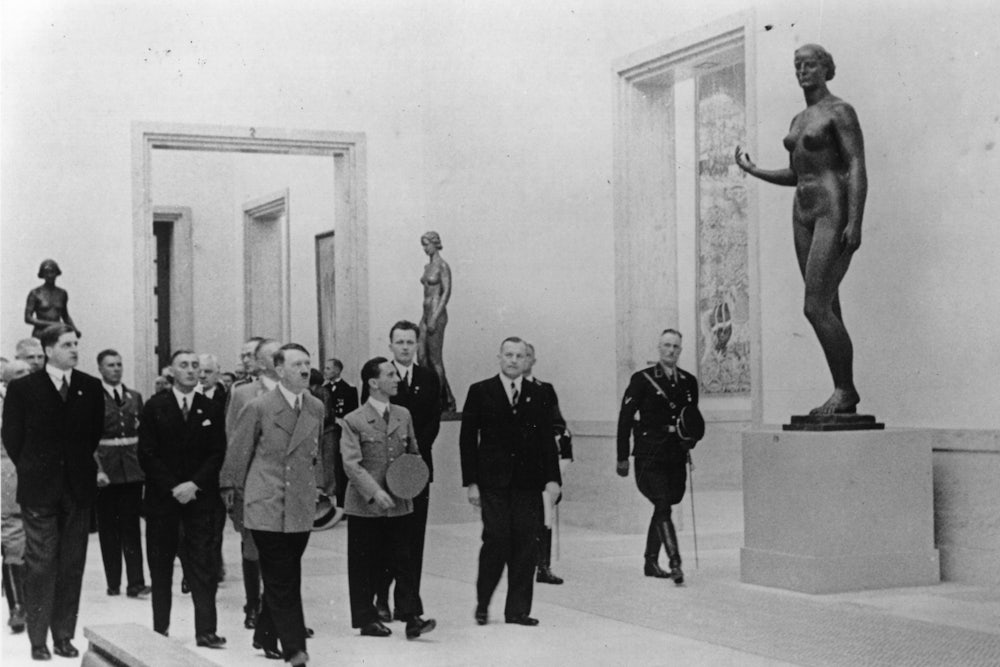Book review: How the Nazis Made Art Fascist
Benjamin Martin: The Nazi-Fascist New Order for European Culture
Reviewed by IAN BEACOCK

Keystone/Getty Imagges
Reviewed by IAN BEACOCK

Keystone/Getty Imagges
Cary Grant was there.
So was the distinguished silent film star Mary Pickford. Tyrone Power, handsome
swashbuckler of stage and screen, showed up with his new wife, the glamorous
French actress Annabella. As they did every summer, the world’s rich and famous
had descended upon Venice to toss back flutes of prosecco at the Biennale and
step out at the Film Festival. In August 1939, however, the guest of honor was
Joseph Goebbels, Hitler’s chief propagandist and the cultural czar of the Third
Reich. Goebbels made a dramatic entrance by gondola, gliding down the Grand
Canal as swastika flags rippled from bridges and windowsills. Italian
newsreels show the propaganda minister sunning himself aboard a
sailboat and leading a nighttime rally in the Piazza San Marco. Within weeks of
Goebbels’ Venetian tour, German tanks thundered into Poland. Europe was once
again at war.
Fascist Italy and Nazi
Germany formalized their military alliance in May 1939. Yet both powers
recognized that hegemony in Europe and the Mediterranean required the
projection of cultural influence as much as the force of arms. And so they set
about remaking European civilization in their own image. During the 1930s,
Berlin and Rome built a right-wing network of international organizations for
film, music, literature, and academic scholarship. These bodies lent prestige
to the Nazi–fascist project while laying the groundwork for a new idea of
Europe itself: not liberal and cosmopolitan but racially pure and
authoritarian—a sharp rebuke to the mixed, messy democratic modernity of
France, Britain, and the United States. The Venice Film Festival was the finest
jewel in the Nazi–fascist cultural crown, founded by Mussolini’s regime in 1932
as an aesthetic counterweight to Hollywood commercialism.
This is the story
narrated with great erudition and grace by Benjamin Martin in his new book The
Nazi-Fascist New Order for European Culture. The insidious spread of
what Martin calls “the soft power of Nazi and fascist imperialism” is a
staggering tale of geopolitical and intellectual ambition. It is all the more
astonishing for having been overlooked for so long. Drawing upon libraries and
archives in five different countries, Martin’s work is a dazzling transnational
history of ideas and institutions as well as a major contribution to our
understanding of fascism and the Third Reich: Martin reveals how cultural
initiatives unlock the political imagination of the interwar radical right. It
was in concert halls and boardrooms and along red carpets that sinister ideologues
like Goebbels most fully revealed their plans to remake European civilization
and overturn the global order.
The book also lands
with more shuddering force than its author could have anticipated. More than
any moment since the 1930s, we suddenly face the
prospect of a world system principally shaped by the extreme right. .. read more:
